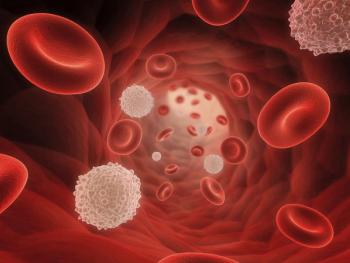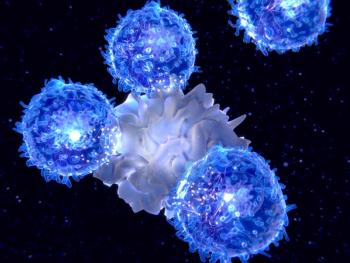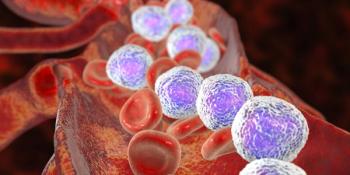
Getting to Transplant Remains Goal in Relapsed/Refractory Hodgkin Lymphoma
As part of our coverage of the ASH Annual Meeting, we are discussing novel agents and strategies for relapsed/refractory Hodgkin lymphoma.
As part of our coverage of the American Society of Hematology (ASH) Annual Meeting held December 3–6 in San Diego, we are speaking with Craig H. Moskowitz, MD, the Steven A. Greenberg chair in lymphoma research and clinical director of the division of hematologic oncology at Memorial Sloan Kettering Cancer Center in New York. At this year’s meeting, Dr. Moskowitz will be participating in a session on novel agents and strategies for relapsed/refractory Hodgkin lymphoma.
-Interviewed by Leah Lawrence
Cancer Network: Thank you for speaking with us today, Dr. Moskowitz.
Dr. Moskowitz: Happy to help.
Cancer Network: First, how common is Hodgkin lymphoma and how often will patients experience relapse or become refractory to therapies?
Dr. Moskowitz: In the United States, there is about 8,700 patients each year diagnosed with Hodgkin lymphoma. About 700 of those patients are older than the age of 65 to 70, and usually those patients are evaluated and treated differently. Of the remaining patients, about 1,400 to 1,500 patients will need to receive additional therapy after the first curative attempt-meaning, they will have relapsed or refractory disease.
Cancer Network: What are the more common first-line treatments used in patients with Hodgkin lymphoma?
Dr. Moskowitz: Worldwide there are really only two main treatments and one that is being investigated. The one used in the United States and a number of countries in Western Europe is called ABVD [doxorubicin, bleomycin, vinblastine, and dacarbazine]. Its competitor is called escalated BEACOPP [bleomycin, etoposide, doxorubicin, cyclophosphamide, vincristine, procarbazine, and prednisone], which is a German-based regimen that is used in some countries in Europe. There are some variations where patients get what is called PET-adapted therapy where they start with ABVD and, if response is suboptimal, treatment will be changed to escalated BEACOPP and vice versa. There are studies and reports where patients start with escalated BEACOPP and if the response is excellent then treatment is reduced to ABVD. A large study was recently finished, which includes brentuximab vedotin and AVD compared with ABVD, but it has not been reported yet. Hopefully at the next ASH we will see those results.
Cancer Network: There have been a lot of novel targeted agents for the treatment of Hodgkin lymphoma recently. What are some of the newest salvage therapies on the horizon for these patients?
Dr. Moskowitz: First, the issue is we treat everybody with relapsed/refractory disease with curative intent. Curative intent means that the patient is going to most likely undergo an autologous stem cell transplant. In order for that to happen, patients need to receive what we call salvage chemotherapy to shrink down the disease and, hopefully, put the patient in remission followed by a transplant.
The salvage chemotherapy that has traditionally been used is platinum based. There are a number of regimens, studies, and reports on combining brentuximab vedotin, which is an antibody-drug conjugate, with standard therapy to try to improve the complete response rate prior to transplant. That may or may not come to fruition. There is also a study being presented at ASH that is combining brentuximab vedotin with the checkpoint inhibitor nivolumab in this setting to improve the complete response rate prior to transplant.
Be that as it may, the goal is to get patients to an autologous stem cell transplant, which is therapy with curative intent. Post-transplant there are data from a randomized study called the AETHERA study to suggest that patients with certain risk factors benefit from a year of brentuximab vedotin maintenance. Those are standard treatment options.
Cancer Network: What about in patients who might not qualify for transplant?
Dr. Moskowitz: I think everybody is transplant-eligible. There is the rare patient that is transplant-ineligible, which is basically based upon age. Remembering that the median age of Hodgkin lymphoma is 28, it is hard to imagine that a patient will not be transplant-eligible. In the markedly elderly, we tend to give a patient either single-agent treatment with or without brentuximab, and there will be studies evaluating both nivolumab and pembrolizumab.
Cancer Network: Your talk will discuss novel agents but also novel strategies. Can you talk a bit about what some of those strategies are?
Dr. Moskowitz: I am really going to be talking about novel strategies. The novel treatments are checkpoint inhibitors and brentuximab vedotin, but it is in the context of curative therapy. Giving these treatments for palliation, which I will also discuss, is something that is an evolving new field. The number of patients that will get palliative therapy for Hodgkin lymphoma is minimal because the patients are young. We want to treat the patients with curative intent.
In general though, what is out there in the lay press is three drugs. Brentuximab vedotin is currently only approved in two settings: for palliative care after failed transplant or for maintenance therapy after a patient gets a transplant to improve remission duration. Nivolumab is approved for patients in which a stem cell transplant, as well as brentuximab vedotin, failed. Pembrolizumab, which is a cousin of nivolumab, has not been approved yet for Hodgkin lymphoma, but will likely be approved by the end of the year for a similar patient population for palliation. As far as what is being studied with these agents, they are being studied in a variety of aspects of Hodgkin lymphoma management.
Cancer Network: How do you decide what therapies are most appropriate for patients as they enter into salvage therapy?
Dr. Moskowitz: Once again, the issue is treatment with curative intent vs palliative intent. In patients being treated with curative intent, my goal is to improve response rate prior to a transplant. Right now, we know those results: there is a large list of studies that have been published in which the complete response rate is approximately 70%.
Can we improve that by adding either brentuximab vedotin or a checkpoint inhibitor to the backbone of chemotherapy? It is possible, and I study that. Is it possible that we should be adding more novel agents post-transplant for maintenance? It is possible, and that is being studied. Off of a clinical trial, what is the standard management for patients with relapsed/refractory Hodgkin lymphoma in the era of novel agents? The way that most folks are managed is they get platinum-based chemotherapy for 2 to 3 cycles followed by autologous stem cell transplant followed by brentuximab vedotin maintenance. If that treatment fails, patients then get a checkpoint inhibitor, either for long-term palliation or as a bridge to allogeneic transplant. That is how patients are managed in 2016/2017.
Cancer Network:Thank you so much for taking the time to speak with us today about this topic.
Newsletter
Stay up to date on recent advances in the multidisciplinary approach to cancer.




















































































